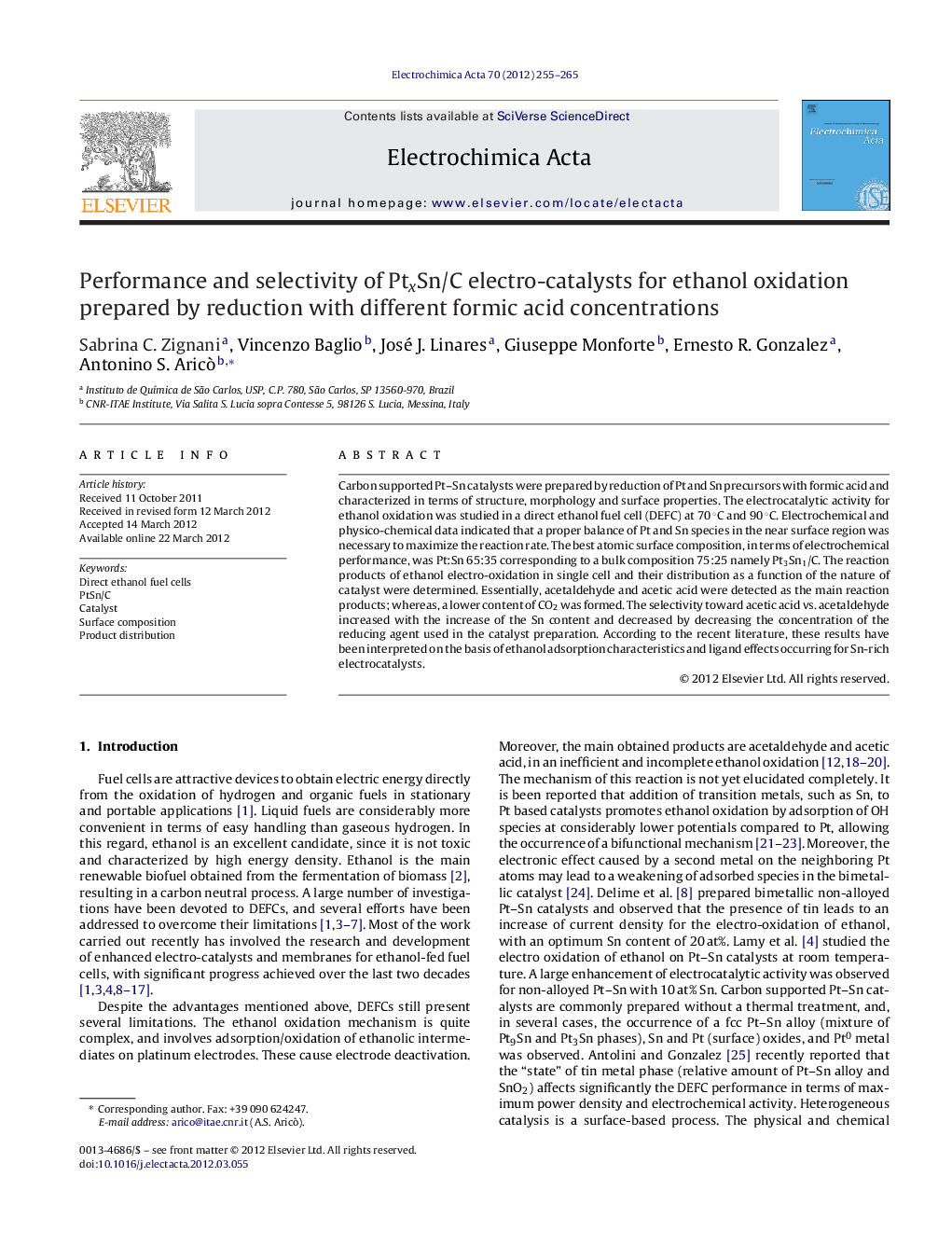| Article ID | Journal | Published Year | Pages | File Type |
|---|---|---|---|---|
| 188404 | Electrochimica Acta | 2012 | 11 Pages |
Carbon supported Pt–Sn catalysts were prepared by reduction of Pt and Sn precursors with formic acid and characterized in terms of structure, morphology and surface properties. The electrocatalytic activity for ethanol oxidation was studied in a direct ethanol fuel cell (DEFC) at 70 °C and 90 °C. Electrochemical and physico-chemical data indicated that a proper balance of Pt and Sn species in the near surface region was necessary to maximize the reaction rate. The best atomic surface composition, in terms of electrochemical performance, was Pt:Sn 65:35 corresponding to a bulk composition 75:25 namely Pt3Sn1/C. The reaction products of ethanol electro-oxidation in single cell and their distribution as a function of the nature of catalyst were determined. Essentially, acetaldehyde and acetic acid were detected as the main reaction products; whereas, a lower content of CO2 was formed. The selectivity toward acetic acid vs. acetaldehyde increased with the increase of the Sn content and decreased by decreasing the concentration of the reducing agent used in the catalyst preparation. According to the recent literature, these results have been interpreted on the basis of ethanol adsorption characteristics and ligand effects occurring for Sn-rich electrocatalysts.
